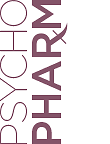Addiction psychiatrists may be more apprehensive about prescribing benzodiazepines than other physicians. Although the medications—which are commonly prescribed for the treatment of anxiety and insomnia—mark a therapeutic advancement from barbiturates, they also have the potential to be addictive. For some people, benzodiazepines produce a euphorigenic effect, similar to that of alcohol, leading some to refer to the medications as “alcohol in a pill.”
While the percentage of people who become addicted to benzodiazepines is not known,
data from the 2014 National Survey on Drug Use and Health suggest that about 1.5 million Americans start using tranquilizers and sedatives for nonmedical use every year.
The most frequently abused benzodiazepines include alprazolam (Xanax), lorazepam (Ativan), clonazepam (Klonopin), and diazepam (Valium). Of those compounds, “Xanax Bars,” or 2 mg alprazolam tablets, seem to be the most commonly abused. Benzodiazepines have been available generically for some time now, so they are very inexpensive to purchase under prescription. They can also be acquired illegally at an average street value of $5 per 2 mg tablet.
While the maximum recommended dose of alprazolam is 4 mg/day, it is not uncommon for a person who is abusing the medication to take 8 mg/day to 20 mg/day in combination with street drugs.
People with alcohol use disorders who experience sleep disturbances might also abuse other benzodiazepine-like, sedative-hypnotic compounds such as zolpidem (Ambien) or eszopiclone (Lunesta) in combination with alcohol to help them sleep through the night.
The immediate risk of excessive use of a benzodiazepine is accidentally overdosing on the medication alone or in combination with alcohol and other drugs of abuse. Chronic use of benzodiazepines can lead to tolerance and chronic withdrawal symptoms that can last for months when the medication is discontinued.
Even when patients want to address their addiction, significant treatment obstacles exist. Structured detoxification is difficult to find in the American health care system—especially for benzodiazepines, which require careful attention to the prevention of seizures, withdrawal delirium, and treatment of chronic withdrawal symptoms. Outpatient detoxification from emergency departments, urgent care centers, or outpatient clinics can also be complicated by the lack of medical detoxification facilities.
Despite these reservations, benzodiazepines have a unique place in acute inpatient psychiatry, emergency departments, outpatient treatment, and hospital medicine. They are very good medications to use in controlled environments for acute alcohol and sedative hypnotic withdrawal, acute seizures, catatonia, akathisia, and various agitation syndromes associated with acute psychosis and mania.
The goal is to taper patients being treated in an inpatient setting off benzodiazepines prior to discharge if possible and to not treat patients being treated for addiction with benzodiazepines if they are outside of a supervised environment where access is controlled.
Some studies suggest that patients with severe panic disorder might benefit from benzodiazepines in combination with an antidepressant, but it is recommended that benzodiazepines be discontinued within the first month of treatment.
There are physicians who claim that they have successfully treated patients with an alcohol use disorder or anxiety with low doses of benzodiazepines for decades. Such reports suggest that more research is needed to determine whether it is possible for benzodiazepines to be used long-term without negative side effects or development of tolerance. Addiction psychiatrists often see the failures.
When prescribing benzodiazepines, clinicians should always gauge the extent to which the patient seems to enjoy the medication. Medications that are addictive run the risk of being used for conditions for which they were never prescribed. For instance, instead of taking a benzodiazepine for anxiety or panic, a patient may begin taking it to alleviate insomnia and stress, or even to wind down at the end of the day.
The best public health approach to the problem of benzodiazepine addiction and overdose is to reduce the populations that are exposed to this medication. Cognitive-behavioral therapy (CBT) and cognitive-behavioral therapy for insomnia (CBT-I) are effective methods to manage anxiety and insomnia without medications. ■
References:
George Dawson, M.D., is an addiction psychiatrist at the Hazelden Betty Ford Foundation and an adjunct professor at the Hazelden Betty Ford Foundation Graduate School of Addiction Studies.

